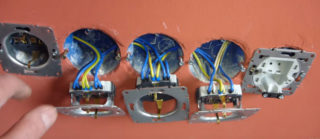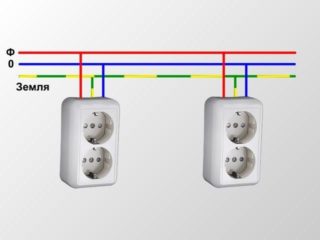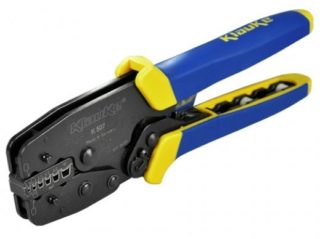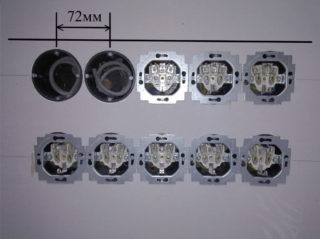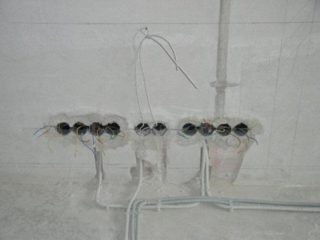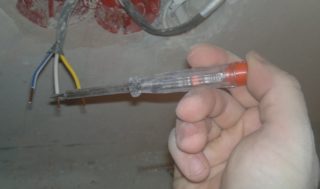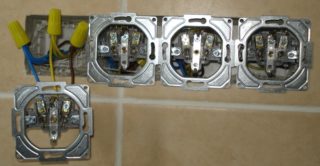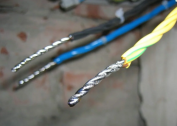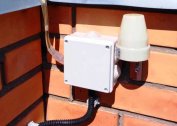When wiring the electrical system in the apartment, a fairly popular method of installing devices is used - connecting the sockets with a cable. It is important to understand how to install electrical appliances safely, and in which case this method cannot be used.
Connection Methods
There are two main schemes for connecting outlets in the apartment. Radial, which is also called an "asterisk", provides a separate line to each outlet. This method requires additional financial investments, as it will require a lot of expensive cable. Difficulties arise if the apartment is already finished and you have to ditch the walls. The advantages of the method are simplicity and reliability. It is recommended to use it to connect powerful electrical appliances.
The second method is parallel or loop, when several points are connected to the same line at the same time. Such a scheme increases the savings, but reduces the safety and reliability of the wiring. Use it if you need to connect power to a group of outlets. Individual sections can be formed depending on the location of the devices.
Sometimes it is impractical to connect the sockets with a loop. Such a device is permissible only when the power of all switched on devices is not higher than the power of the cable supplying the sockets.
Features of installing a group of sockets with a loop
The disadvantage of this method is that if the wires in one outlet are damaged, the subsequent ones will also not work. When reducing their number, the reliability of the system increases.
According to the PUE, the sockets must be connected without breaking the PE conductor. Otherwise, they are left without grounding. The group must be connected to the 16A machine with a 2.5mm cable, and the power of the connected consumers does not exceed 3 kW. If the load is higher, a separate line is drawn to each device.
It is necessary to make calculations in advance in order to know how many outlets can be connected in series. It is necessary to establish the type, power and number of electrical appliances. Correlate data with room size and layout. If you need a large number of outlets, it is better to lay several lines.
Installing the power outlet
To work, you need a certain set of tools:
- voltage indicator;
- level;
- universal screwdriver;
- pliers;
- pencil and construction knife;
- press pliers;
- thermotube;
- hammer drill.
First, perform the wiring diagram. It indicates the location of junction boxes, sockets, switches. Mark the route along which the wires will go. They should be located strictly vertically and horizontally, have no more than one bend at a right angle. The depth of the channels is up to 2.5 cm, width 3. The length from the box to the outlet is no more than 3 meters. The circuit should be saved so that during the next repair during the work not to get into the wire.
The most laborious work is wall chipping. It is more convenient to do this with a special tool, but you can do it with improvised means - a hammer, chisel, “grinder”, a drill with a 8–10 mm drill bit. It should be kept perpendicular to the wall, working at low speeds. Drill periodically in water.
Next, perform holes for the sockets. Sleeves are mounted on alabaster or plaster. So that the solution does not harden quickly, you can add PVA glue to the water. The standard box has a depth of 45 mm.Everything you need can easily fit into the socket.
For walk-through sockets, it is better to use a 60 mm in-depth sleeve, since the incoming and outgoing cable will be located in it.
Installation of branches in the socket
Wiring can run inside walls or along their surface. The first option is simple in execution, but loses in aesthetics. Hidden wiring provides for wall decoration after installation. However, when there is a need to repair the power grid, you have to destroy the walls.
Connecting devices to the power cable must be safe and reliable. Each outlet must have a housing for protection against electric current. Mounted have their own box. To install the built-in use the socket. They are made of dielectric materials, securely fix the device in the wall, prevent moisture from entering and are fireproof.
Connecting several outlets is carried out by a three-core cable. The power cable from the junction box is brought to the first one. Then all sockets must be connected to each other. In this case, all three conductors are connected by a loop - phase, zero and ground. The connection on one PE terminal of the conductor reduces reliability and worsens contact. Therefore, the ends of the ground wire are connected by crimping with the output of the branches. This place is insulated with a cap. The terminal should have a rectangular washer.

Grounding is installed in each socket, there is enough space for laying wires. This method is considered reliable and guarantees protection. It is indispensable for the need for additional installation of several outlets. Excludes large-scale work. Use it for small loads in an apartment or house, in ordinary conditions.
The rule of arrangement of electrical installations prescribes to prohibit the connection of the PE conductor to break. For the safety of a person and his home, it is important that the wiring complies with all standards and requirements.
The order of installation of the loop
All work requires a professional approach and safety precautions. You need to know how to properly connect a group of outlets. Before starting, it is necessary to disconnect the entire apartment to disconnect both phase and zero. The absence of voltage is checked by the indicator at the place of work. Installation is carried out in the following sequence.
- Layout and site preparation.
- Wall chipping.
- Cable laying from the junction box to the first socket.
- Preparing wires for jumpers.
- Installing the rosettes.
- Branch preparation to connect PE conductors.
- Installation of the line and laying of wires.
- Connection of zero and phase conductors and grounding conductors.
- Fastening of working elements in the socket and installation of front covers.
The quality of installation depends on the types of contact elements. Reliable are considered models with a flat spring connection method. In extreme cases, this may be a plate clamped by a bolt. The cable underwater to the outlet must protrude beyond the wall surface by no more than 80 mm. If necessary, it should be shortened.

The cable sheath is removed, the wires are routed to the sides. On the left is the phase, on the right is zero, in the middle is the ground wire. Their ends are exposed at 10mm with an isolation puller or knife. A socket with self-locking spring terminals simplifies operation. Enoughly stripped end of the wire into the hole until it stops.
Then it is necessary to check the reliability of the fastening of all cores with a sipping movement. First of all, occasions are packed, and the whole structure is inserted into the socket, pre-fixed on the sides with screws.The level is checked for horizontalness, then the screws are finally tightened. The last one is the front panel, the overlay frame.
Sockets can be connected with a cable for electrical equipment of small power. This method is justified if you urgently need to add a couple of additional outlets. The operation of powerful devices requires the installation of a separate output. The amount of necessary energy for domestic needs is increasing, requirements for the quality of wiring and the reliability of outlets are increasing.
